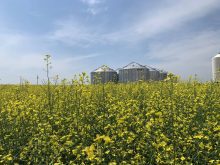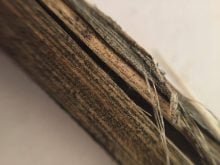Swede midge is a devastating insect pest of canola and related cruciferous vegetables and is a problem in Eastern Canada.
In North America, swede midge was first noticed in Ontario and the eastern United States. It has affected canola production in Eastern Canada, in some cases leading to failed crops.
Swede midge (Contarinia nasturtii) is also a pest in vegetables because it attacks the growing points, preventing formation of heads in broccoli and cauliflower.
Read Also

Cancer agency reclassifies another herbicide ‘probably carcinogenic’
The WHO’s cancer research agency has now put atrazine, a herbicide well known to corn growers, in the same potential-hazard category where the agency put glyphosate.
As an invasive species, swede midge could be a scary prospect for Saskatchewan farmers because of that province’s extensive canola acres. The Canadian Food Inspection Agency issued reports in 2007-08 of swede midge in Manitoba and Saskatchewan, which led to research in the Melfort and Tisdale areas of Saskatchewan.
However, when Meghan Vankosky, a field crop entomologist, and her colleagues from Agriculture and Agri-Food Canada conducted field research, they found an entirely different species of midge.
At last December’s Saskatchewan Agronomy Update conference, Vankosky said swede midge has been monitored in the Prairie provinces since 2006 through volunteer-based programs.
“Throughout all of those years we have not found any swede midge, but we do have something called canola flower midge, which is a newly identified species.”

First identified in 2016, Vankosky’s team conducted surveys across the Prairies and found evidence of canola flower midge in the south-central regions of all three provinces, although density was low.
Since 2017, three research programs have focused solely on canola flower midge, funded by the Canola Agronomic Research Program in Western Canada. The studies have focused on monitoring canola flower midge, its life cycle and impact research and development of a pheromone-based monitoring tool.
According to the Canola Council of Canada (CCC), canola flower midge and swede midge look very similar in appearance as they are from the same genus, Contarinia. Since the larvae and adult forms of both midge species are very small, it is recommended farmers look for the damage canola flower midge larvae cause to unopened canola flowers by feeding within them. The unopened canola flowers grow to form bottle-shaped galls rather than develop normally.
The potential threat to crops from canola flower midge (C. brassicola) is perhaps the biggest question in the minds of canola producers. Vankosky said damage risk to crops from canola flower midge is a challenge to estimate. So far, damage has been low, and, in most fields, yield loss is likely negligible, so the insect is not considered a domestic concern.
However, it is worth noting that some fields in the Melfort and Tisdale areas and some areas of Alberta, outliers in the research, have experienced extreme losses.
CANOLA FLOWER MIDGE LIFE CYCLE
An emergence cage study of canola flower midge showed eggs and larvae can be found from June 21 to Aug. 17, likely with multiple generations per growing season or prolonged emergence, with adults, eggs and larvae present simultaneously from June to September.
Midge eggs are laid in flower clusters where they hatch and develop into larvae in the enclosed flowers. Larvae feed in the unopened flowers, creating a gall and preventing pod formation. Mature larvae later drop to the soil to pupate. It’s possible that pupae can persist in the soil for more than one winter.
Flowers will stay on the plant for a long time but will dry out as the season progresses.
Midges have also been found in developing canola pods previously damaged by other insects.
“In the last two years, there were even reports of midge being found in developing canola pods, which was a surprise to us,” said Vankosky. “What we think is happening here is the canola flower midge is a secondary infestation, entering damaged areas from a different pest.”
Although canola flower midge has yet to be considered a significant pest, research led to the creation of a pheromone trap that can get accurate counts. Vankosky and her team want to optimize the trap for accuracy.
Vankosky said original research on swede midge showed negligible damage but now its threat to canola crops is great. Could this be the case with canola flower midge?
“We have seen this with a number of invasive species, so it is a possibility. But we think that canola flower midge may not be invasive and is actually native to Western Canada and it has just jumped to a non-native target in canola. There is not enough information to support this at this time, but it is our working idea.”
Canola flower midge is widespread across the Prairies and has low and variable parasitism rates.
CCC TIPS FOR BEST MANAGEMENT
The Canola Council of Canada offers the following scouting and management tips. More information can be found online in CCC’s Canola Encyclopedia under the topic of canola flower midge.
- Scout for this newly discovered insect in canola fields from early bud stage through harvest.
- Look for bottle-shaped galls formed from unopened flowers, as well as unusual plant structures, plant discolouration and distorted growing points. Carefully examine inside the galls or malformed pods for larvae.
- The flying adult midges don’t cause any direct damage, but they lay their eggs in developing canola flower buds so that the hatching larvae can feed on developing flowers.
- No economic threshold exists yet for this insect, but based on the limited available data, it isn’t currently believed to cause economic damage.















